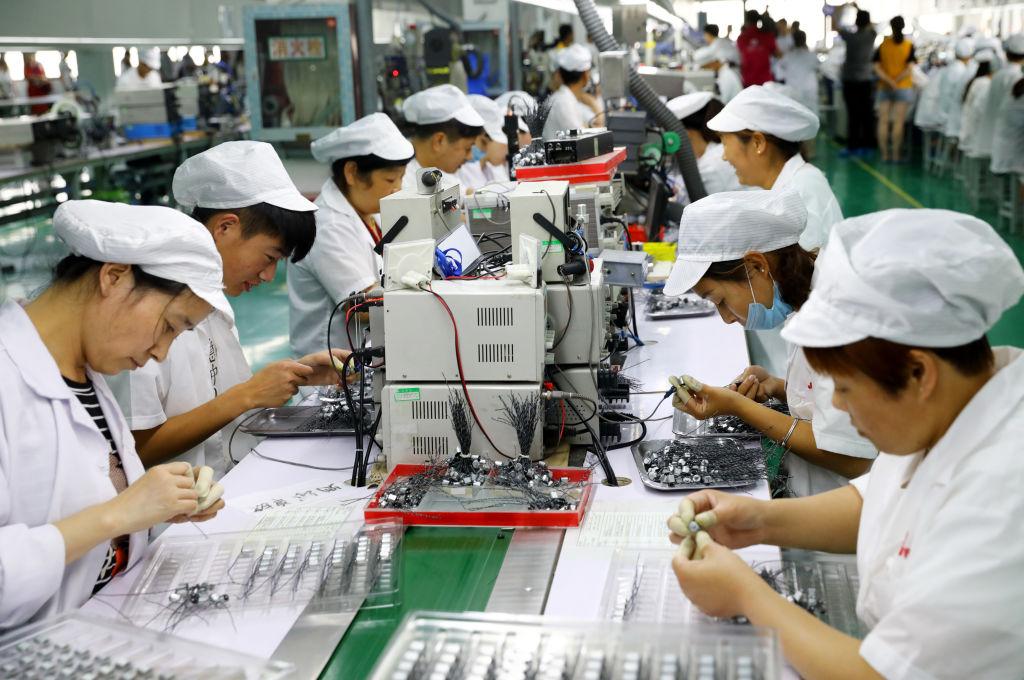BEIJING—Factory activity in China is expected to have contracted for the fourth straight month in August, a Reuters poll showed, as the United States ratcheted up trade pressure and domestic demand remained sluggish.
The official Purchasing Managers’ Index (PMI) for August is expected to be unchanged at 49.7 from July, according to the median forecasts of 27 economists, but remain below the 50-point mark that separates expansion from contraction on a monthly basis.
Further signs of contraction, following surprisingly weak July data, would add to views that the world’s second-biggest economy is continuing to lose momentum.
August saw dramatic escalations in the bitter Sino-U.S. trade war, with President Donald Trump announcing early in the month that he would impose new tariffs on Chinese goods from Sept. 1, and China letting its yuan currency sharply weaken days later.
After Beijing hit back on Aug. 23 with retaliatory tariffs, Trump said existing levies would also be raised in coming months. The combined moves effectively cover all of the Chinese products that America buys.
“Move out from China. That’s the only way for now,” said a Hong Kong exporter surnamed Lau in China, whose metal-coating products would be subject to a higher 30 percent tariff in October.
But the company would have to take the tariff hit first, said Lau, adding there is not enough time to move its capacity to Cambodia—the location it is eyeing at the moment.
The yuan has lost more than 3 percent of its value against the dollar since Trump announced more tariffs on Aug. 1, and has weakened about 12 percent since Washington unveiled China-specific levies in April last year.
But that has not helped Chinese exporters much, as global demand has weakened at the same time.
Analysts at Goldman Sachs said in a note on Wednesday that there are significant risks to growth in China given soft domestic demand, rising external pressures and restrained policy stimulus from Beijing so far.
The bank lowered its growth forecasts for the coming four quarters, taking down sequential growth by 20 basis points each in the third quarter and the fourth, to annualized rates of 5.6 percent and 5.8 percent, respectively.
Beijing is targeting growth of around 6.0-6.5 percent this year.

Enough Support?
The sudden deterioration in trade ties has prompted speculation over whether China needs to start rolling out more forceful measures to keep growth from sliding below 6 percent this year.Analysts widely expect some key policy lending rates will be trimmed next month, especially after the launch of long-awaited rate reforms.
But sources had told Reuters before the latest escalations that big benchmark rate cuts were considered a last resort, as policymakers worry that could fuel a further build-up in debt and squeeze bank’s profit margins, heightening financial sector risks.
So far, Beijing has relied on a combination of fiscal stimulus and monetary easing to weather the economic slowdown, including hundreds of billions of dollars in infrastructure spending and tax cuts for companies.
However, analysts note infrastructure investment growth has cooled despite the earlier measures, underlining the need for additional support soon.
The official PMI and its sister survey on the services sector will be released on Saturday.
A private business survey—the Caixin/Markit Manufacturing Purchasing Managers’ Index (PMI) which focuses more on small and medium-sized Chinese firms—is also expected to show factory activity stuck in contraction last month, with the reading edging lower to 49.8 from 49.9 in July.
The Caixin manufacturing PMI will come out on Sept. 2, and its services PMI survey on Sept. 4.





